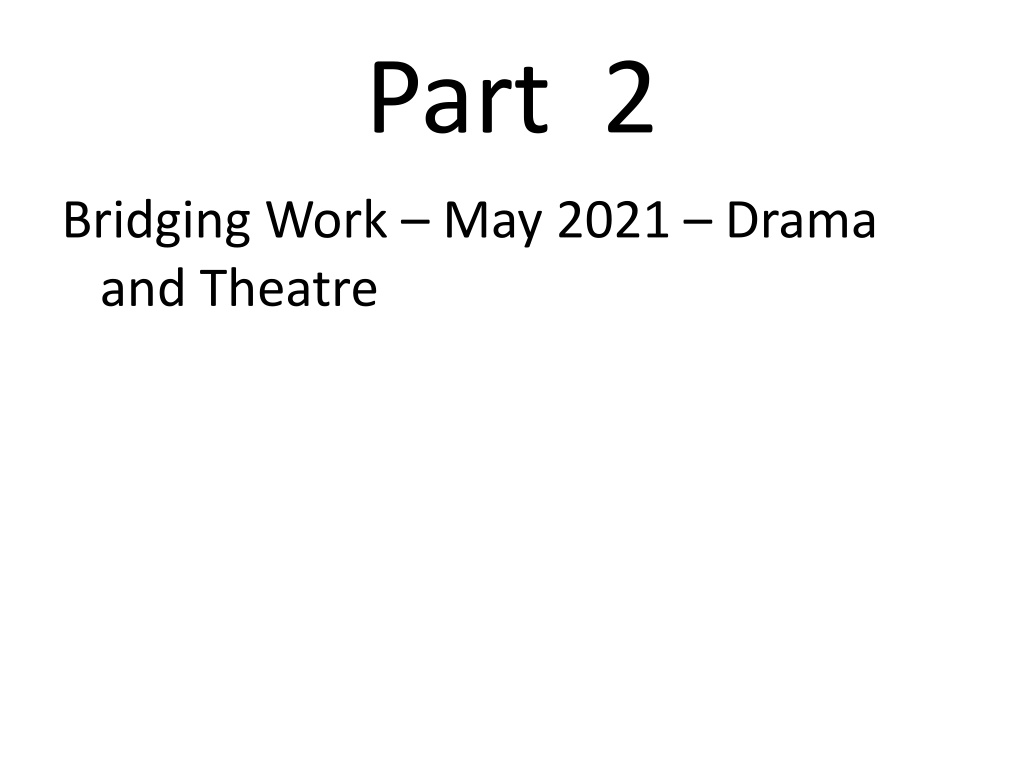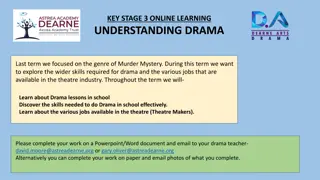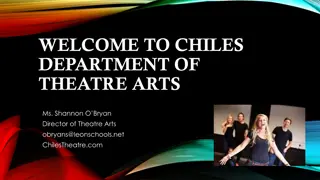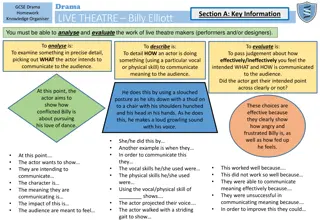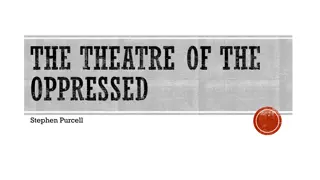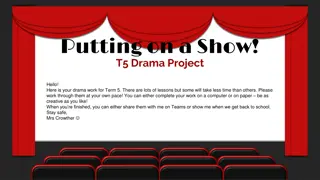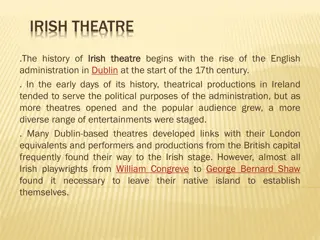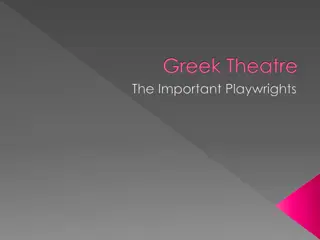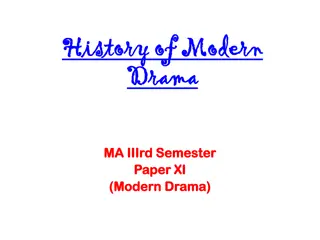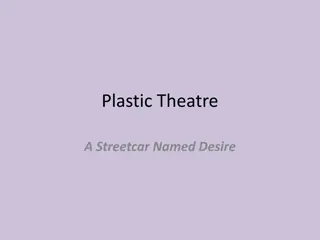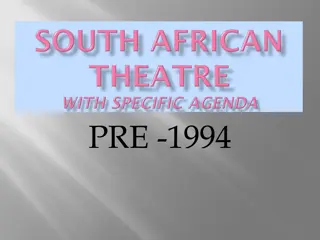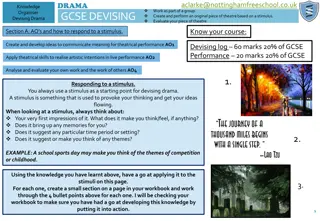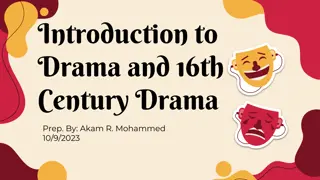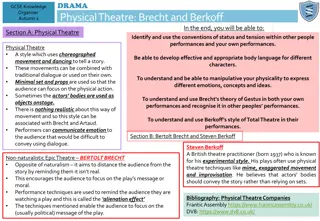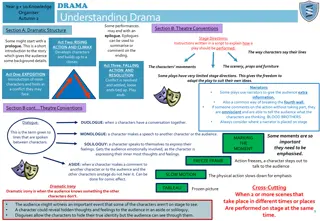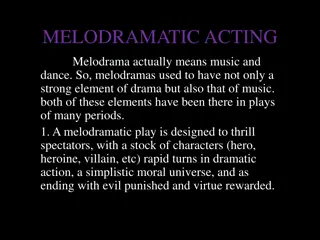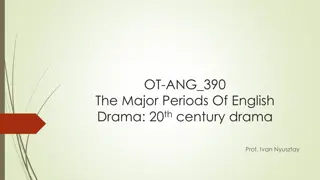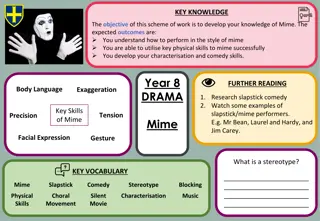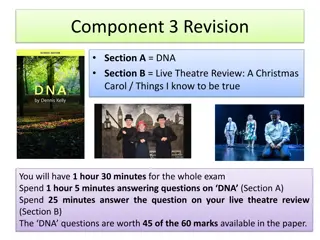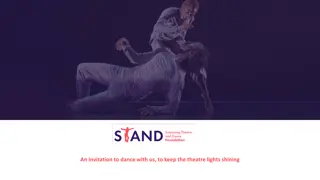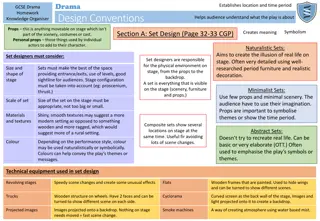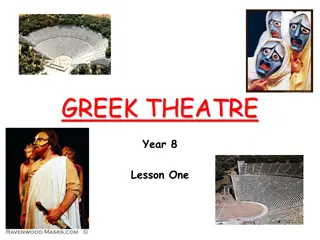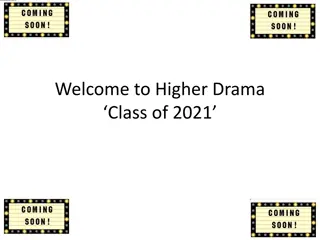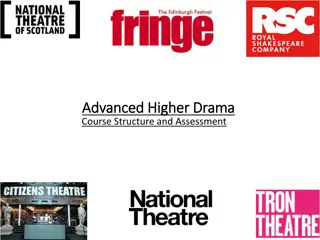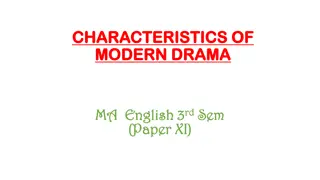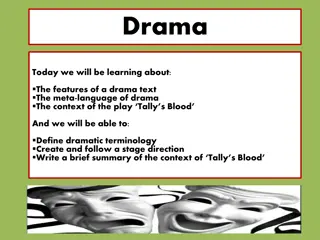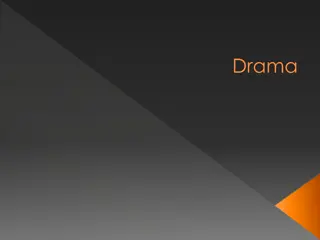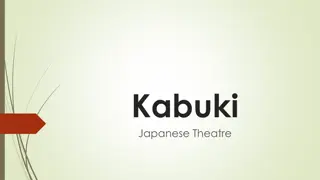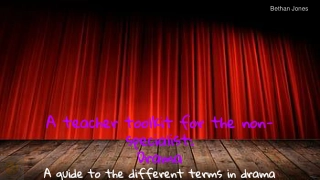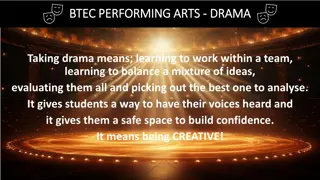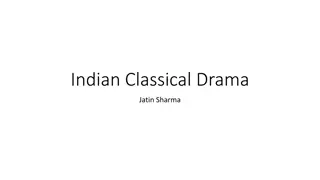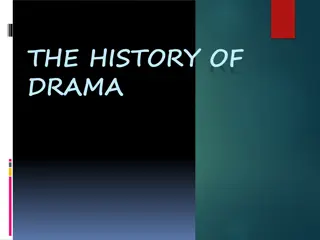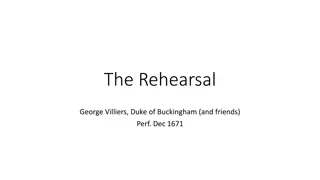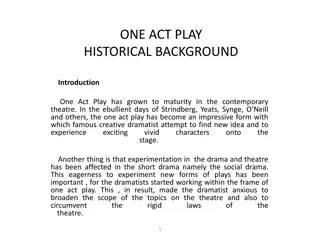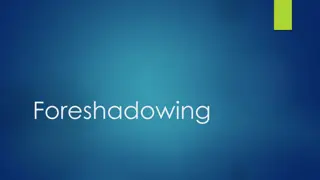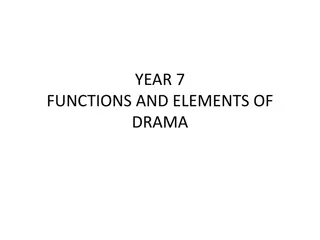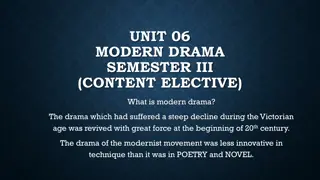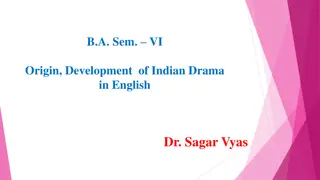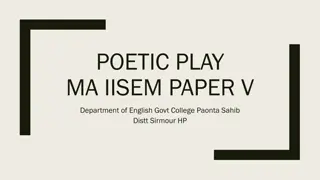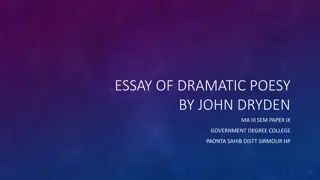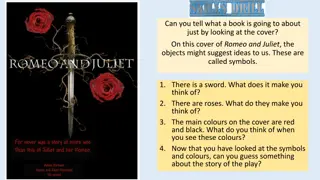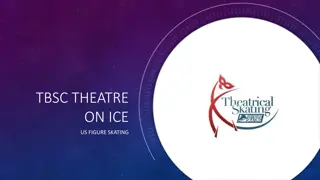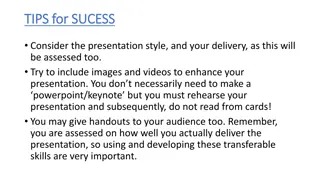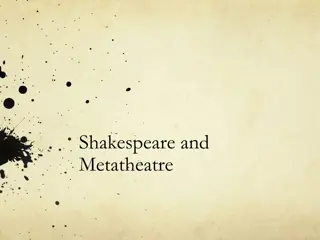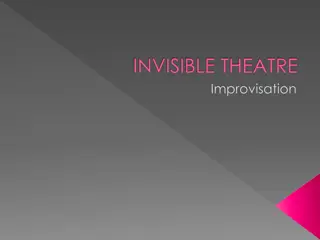Techniques for Creating Believable Characters in Drama and Theatre
Enhance your character portrayal by exploring naturalistic and non-naturalistic techniques such as inner life exploration, actioning, music dynamics, and more. Dive into the world of character development with approaches like Magic If and creating believable circumstances.
Download Presentation

Please find below an Image/Link to download the presentation.
The content on the website is provided AS IS for your information and personal use only. It may not be sold, licensed, or shared on other websites without obtaining consent from the author. Download presentation by click this link. If you encounter any issues during the download, it is possible that the publisher has removed the file from their server.
E N D
Presentation Transcript
Part 2 Bridging Work May 2021 Drama and Theatre
CHARACTERISATION Will you use naturalistic or non-naturalistic techniques to create your character? Or a Synthesis of both?
For your character explore these techniques to enhance the comedy character. Centres of leading Creating a characte r Animal traits Levels of tension Music dynamics How can you increase the pace? Annotate your script
A These are some ideas to create a believable and truthful character NATURALISTI C APPROACH
Techniques for creating a naturalistic Character Inner Total life of the character Actioning (Max Stafford Clarke) Music Dynamics Monologue Status Off text improvisation On text improvisation Hot seating improvisation Experiment with several interpretations Role on the wall Line feeding Circle of life Exploring staging options set and costume Walking the arc of the text Chair exercise
Magic if A Naturalistic approach Applying Stanislavski techniques - Monologues Emotion Memory Given Circumstances Units /objectives/super- objective/Obstacles
The magic if is imagination; for example, If this piece of paper is a baby bunny rabbit then why is it here? Does it have siblings? Where are its parents? The magic if encourages the mind to ask questions which will in turn give you the belief you need to provide more detail, build on given circumstances . The Magic If Your scriot already provide you with some facts- the given circumstances. You now need to use your imaginations to fill in the blanks.
NON- These are some ideas for alternative ways into your monologue NATURALISTI C APPROACH
Tension toolkit Comedy toolkit Toolkits Vocal toolkit Physical toolkit
Non-naturalistic Drama is acting away from the normal ways that people are used to. For example, talking or walking in a weird, unusual manner that is not representative of real life. Non- naturalist ic performa nce Non-naturalism does not seek to re-create life as it is lived, but is focused more on passing comment on, or responding to, aspects of the real world. Non-naturalistic performance can occur in any space and is not dependent on specific resources. Non-naturalistic performance work might include the manipulation of both naturalistic and non- naturalistic conventions.
Non-naturalistic Drama is acting away from the normal ways that people are used to. For example, talking or walking in a weird, unusual manner that is not representative of real life. Non- naturalist ic performa nce Non-naturalism does not seek to re-create life as it is lived, but is focused more on passing comment on, or responding to, aspects of the real world. Non-naturalistic performance can occur in any space and is not dependent on specific resources. Non-naturalistic performance work might include the manipulation of both naturalistic and non- naturalistic conventions.
Non-naturalistic techniques Narration Narration is a technique whereby one or more performers speak directly to the audience to tell a story, give information or comment on the action of the scene or the motivations of characters. Characters may narrate, or a performer who is not involved in the action can carry out the role of 'narrator'. Consider the opening scene of Henry V in which Chorus introduces the audience to the play and outlines what is happening - and then reappears at points in the play to describe the change of scene. Mime A complex and sophisticated art-form in itself - but useful at all levels especially where staging is minimal or non-existent.
Non-naturalistic techniques Breaking the Fourth Wall A good reason to know what the Fourth Wall is - remember a week or so ago? - is consider it being broken (eg in a pantomime where the actors may ask the chilren in the audience for help as they look for the villain He s behind you ). ie speaking directly to the audience as if stepping momentarily out of they play. Woody Allen does this a lot: watch Annie Hall if you haven t already. Split Scene This is where two scenes go on at the same time on stage, one stage left and one stage right. The scene stage left will begin, for example and the actors in the scene stage right will be frozen. The actors stage left will then freeze and the actors stage right will resume the action and then freeze at the end. This may go backwards and forwards several times. It is used to show events that are taking place simultaneously
Non-Naturalistic techniques Marking the Moment Is just a term used to identify where one of the strategies above has been used to draw particular attention to a point in the drama. eg using slow motion and exaggeration to highlight a key point in a murder scene? Flashback Familiar from film, television and literature. It can be done in a number of ways - eg. an old man on one side of the stage thinks back to events in childhood, played by another, presumably younger actor while he watches on as if watching his own earlier life. Flash forward also possible.
Stanislavski emotion memory, given circumstances, magic if, units and objectives How can we create a character? Which of these techniques suit non naturalistic theatre? Brecht direct address, gestus, thoughts aloud Physicality centres of leading, centres of personality, levels of tension, animal traits Stylised Grid, slow motion, Meyerhold Vocal tone pitch intonation
